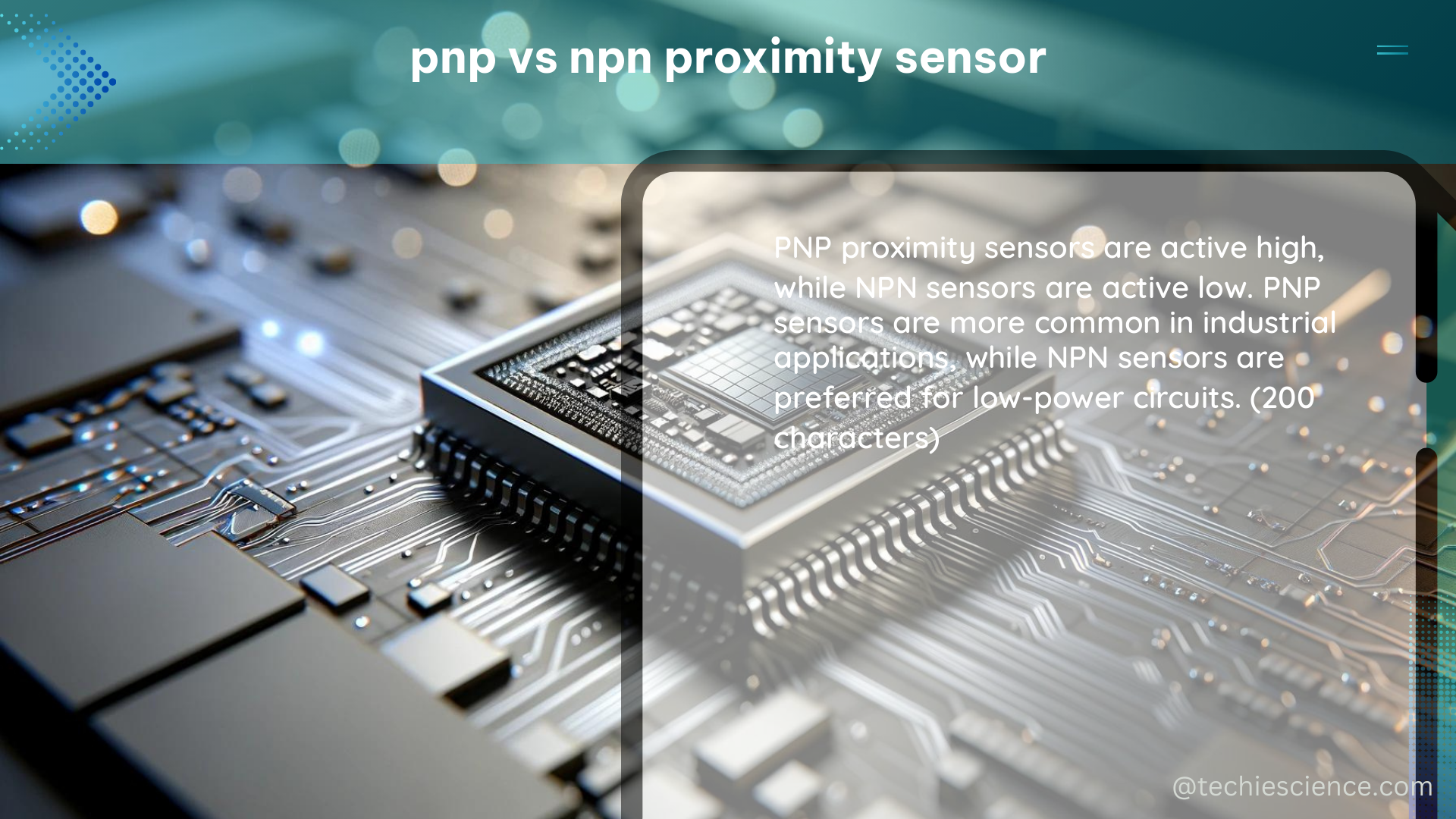PNP (Positive-Negative-Positive) and NPN (Negative-Positive-Negative) proximity sensors are two distinct types of transistors used in sensor technology, differentiated by the construction of their semiconducting materials. Understanding the nuances between these two sensor types is crucial for selecting the appropriate sensor for a specific application, ensuring optimal performance and compatibility with the connected devices.
The Anatomy of PNP and NPN Proximity Sensors
At the core of PNP and NPN proximity sensors lie the transistors, which are the fundamental building blocks of these devices. PNP transistors have a negative (N) layer sandwiched between two positive (P) layers, while NPN transistors have a positive (P) layer nestled between two negative (N) layers. This structural difference is what gives rise to the distinct characteristics and behaviors of these sensor types.
PNP Proximity Sensors: Sourcing Outputs

PNP proximity sensors, also known as “sourcing” outputs, are designed to provide the current to the attached load. In a PNP sensor, the electrical load is connected between the sensor output and the negative (common) side of the power supply. When the sensor is triggered, the output voltage remains at the same level as the supply voltage, allowing the current to flow from the sensor to the load.
Technical Specifications of PNP Proximity Sensors:
– Voltage: The output voltage is the same as the supply voltage.
– Current: The sensor provides the current to the attached load.
– Connection: The load is connected between the sensor output and the negative (common) side of the power supply.
NPN Proximity Sensors: Sinking Outputs
In contrast, NPN proximity sensors, also known as “sinking” outputs, provide the ground to the circuit. The electrical load in an NPN sensor is connected between the sensor output and the positive side of the power supply. When the sensor is triggered, the output voltage switches to a ground signal, allowing the current to flow from the positive side of the power supply, through the load, and into the sensor.
Technical Specifications of NPN Proximity Sensors:
– Voltage: The output voltage is a ground signal.
– Current: The sensor provides the ground to the circuit.
– Connection: The load is connected between the sensor output and the positive side of the power supply.
Global Trends in PNP and NPN Proximity Sensor Usage
The preference for PNP or NPN proximity sensors can vary significantly across different regions and industries. In Asia, approximately 90% of outputs use NPN sensors, while in Europe, around 90% of outputs are PNP. In the United States, the split is more balanced, with a roughly 60/40 NPN to PNP ratio.
Selecting the Appropriate Proximity Sensor
When choosing a proximity sensor for a specific application, it is crucial to consider the type of output required by the connected device, such as a PLC (Programmable Logic Controller) or an IO-Link master. This information can typically be found in the documentation and wiring diagrams of the target device.
Determining the Sensor Type: A DIY Approach
To determine whether a proximity sensor is PNP or NPN, you can follow these simple steps:
- Identify the power supply voltage and ground connections.
- Connect a multimeter to the sensor output and the power supply or ground, depending on the type of output being tested.
- Measure the voltage when the sensor is not triggered and when it is triggered.
- If the voltage is the same as the supply voltage when the sensor is triggered, it is a PNP output.
- If the voltage is a ground signal when the sensor is triggered, it is an NPN output.
By understanding the differences between PNP and NPN proximity sensors, you can ensure that the correct sensor is selected for your specific application, leading to optimal performance and seamless integration with the connected devices.
References:
– How to tell if a proximity sensor is NPN or PNP? – Electronics Stack Exchange
– What is the difference between PNP and NPN when describing 3 wire connection of a sensor? – Schneider Electric
– Industrial sensing fundamentals – NPN vs PNP – Balluff
– PNP vs NPN: What Makes These Outputs Different? – Banner Engineering

The lambdageeks.com Core SME Team is a group of experienced subject matter experts from diverse scientific and technical fields including Physics, Chemistry, Technology,Electronics & Electrical Engineering, Automotive, Mechanical Engineering. Our team collaborates to create high-quality, well-researched articles on a wide range of science and technology topics for the lambdageeks.com website.
All Our Senior SME are having more than 7 Years of experience in the respective fields . They are either Working Industry Professionals or assocaited With different Universities. Refer Our Authors Page to get to know About our Core SMEs.